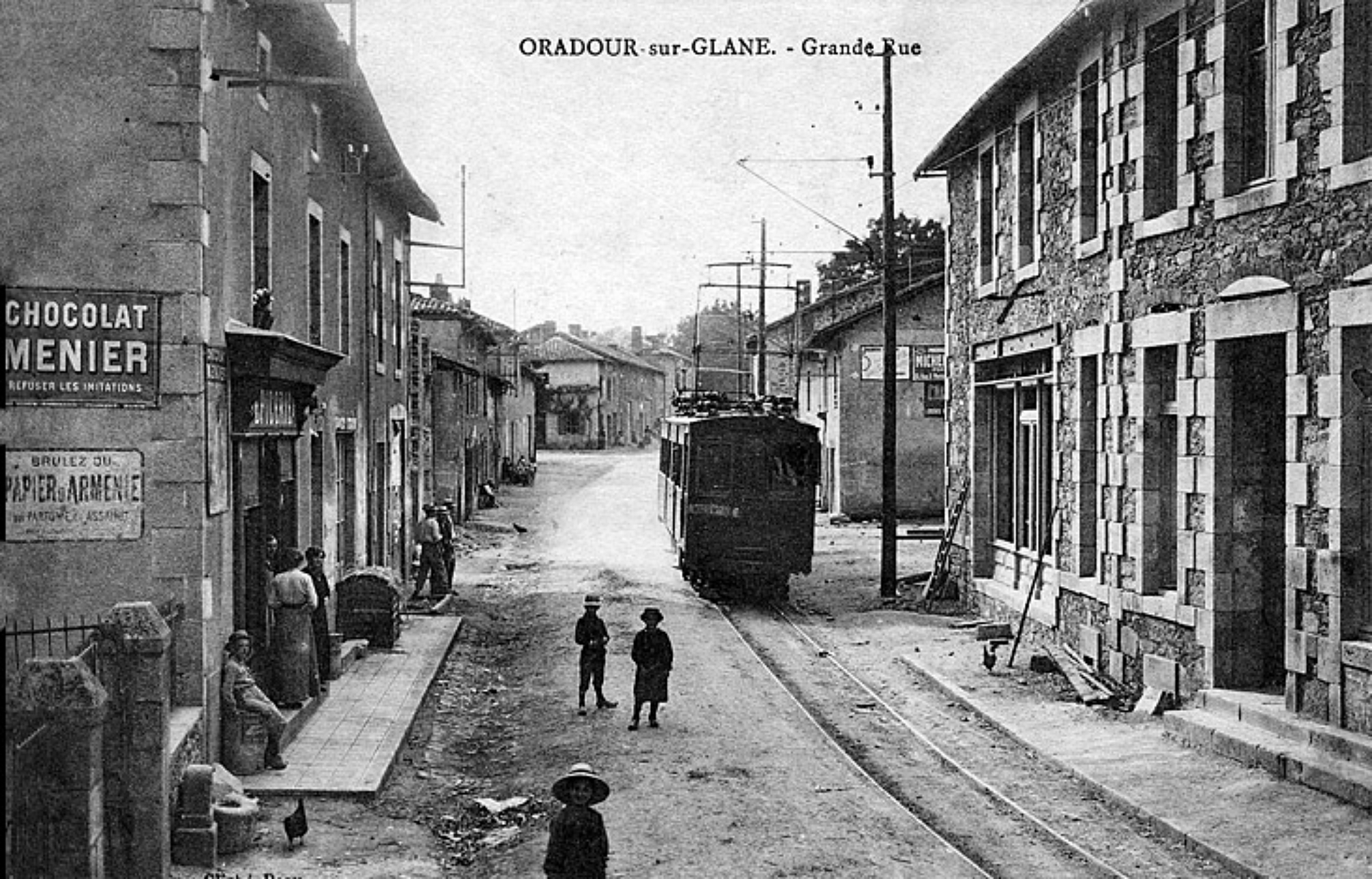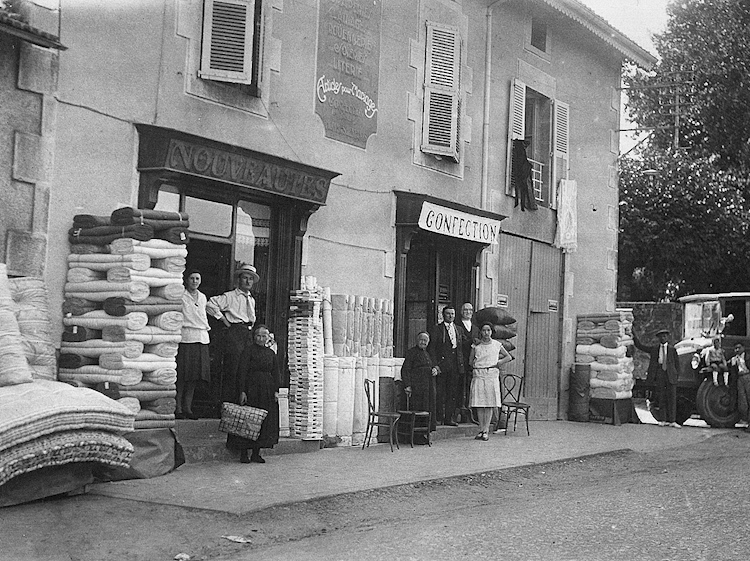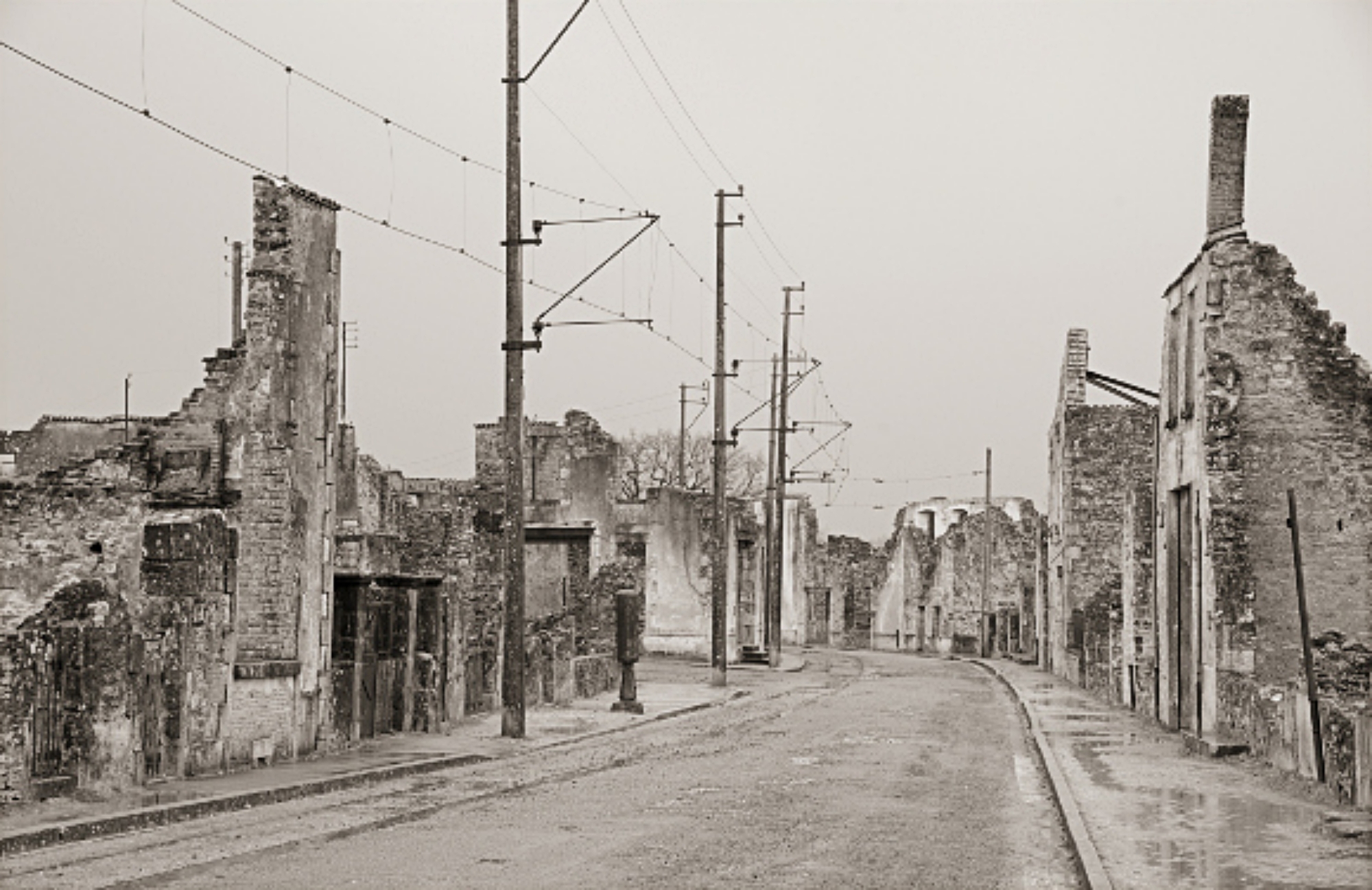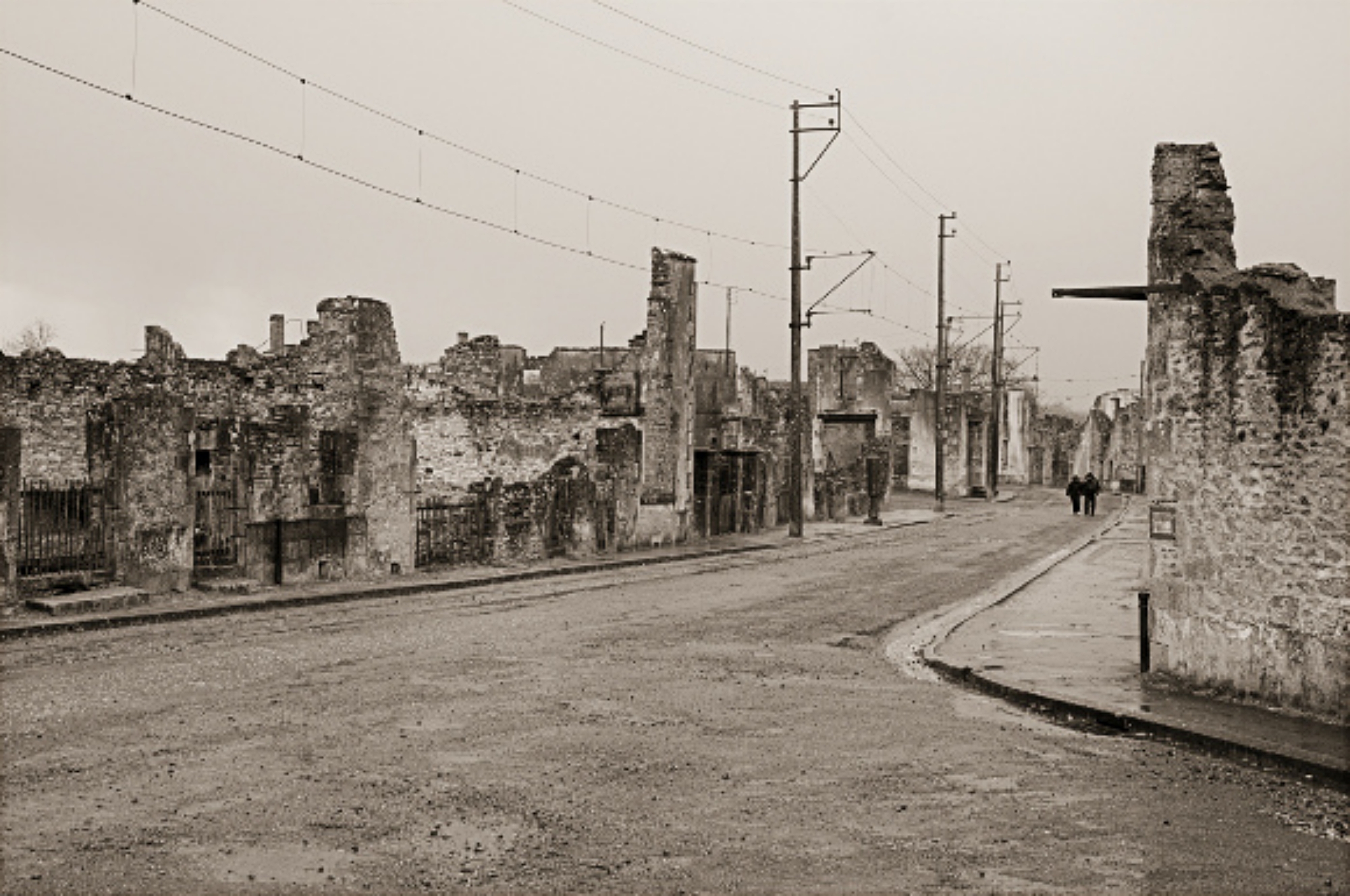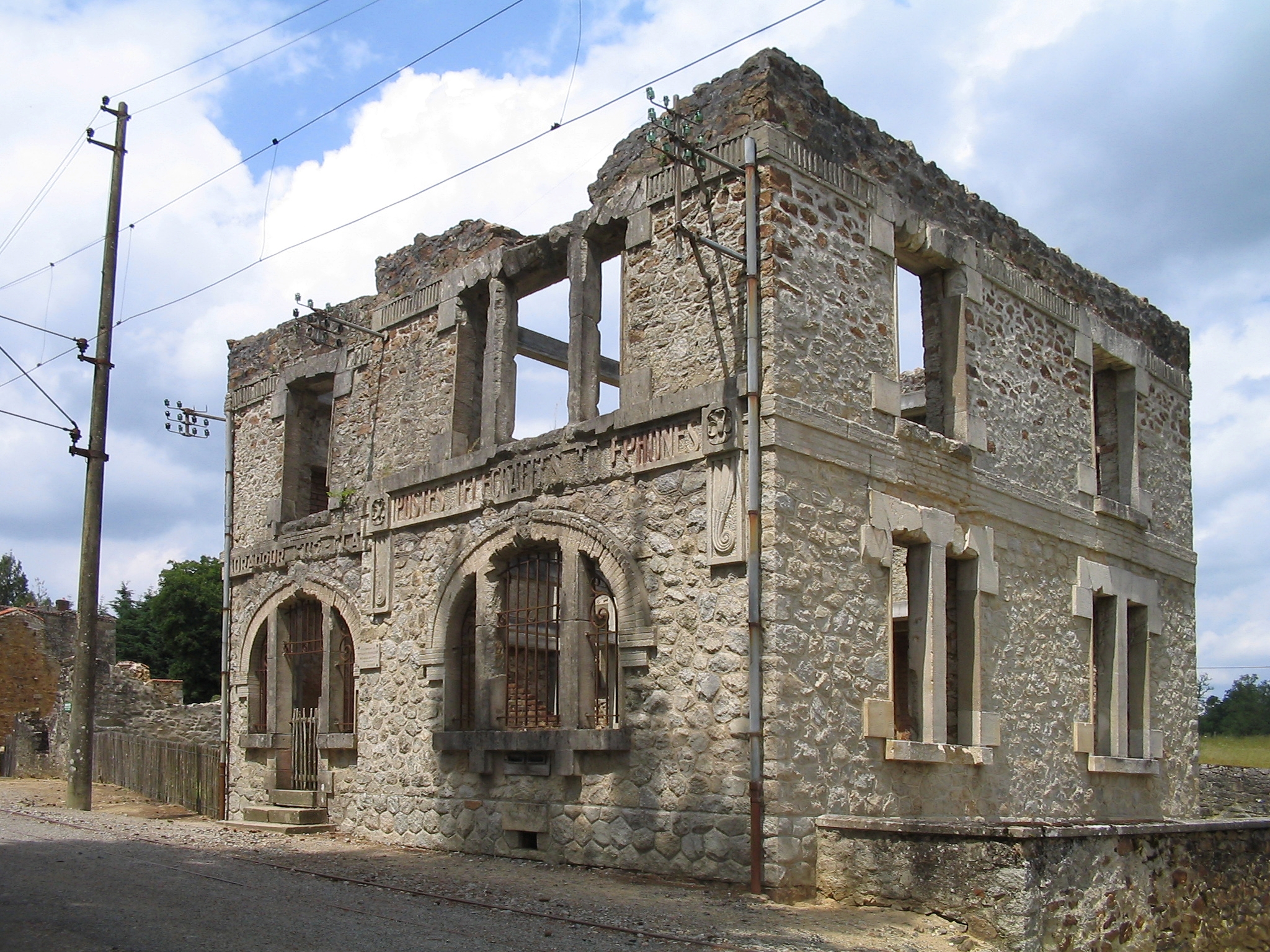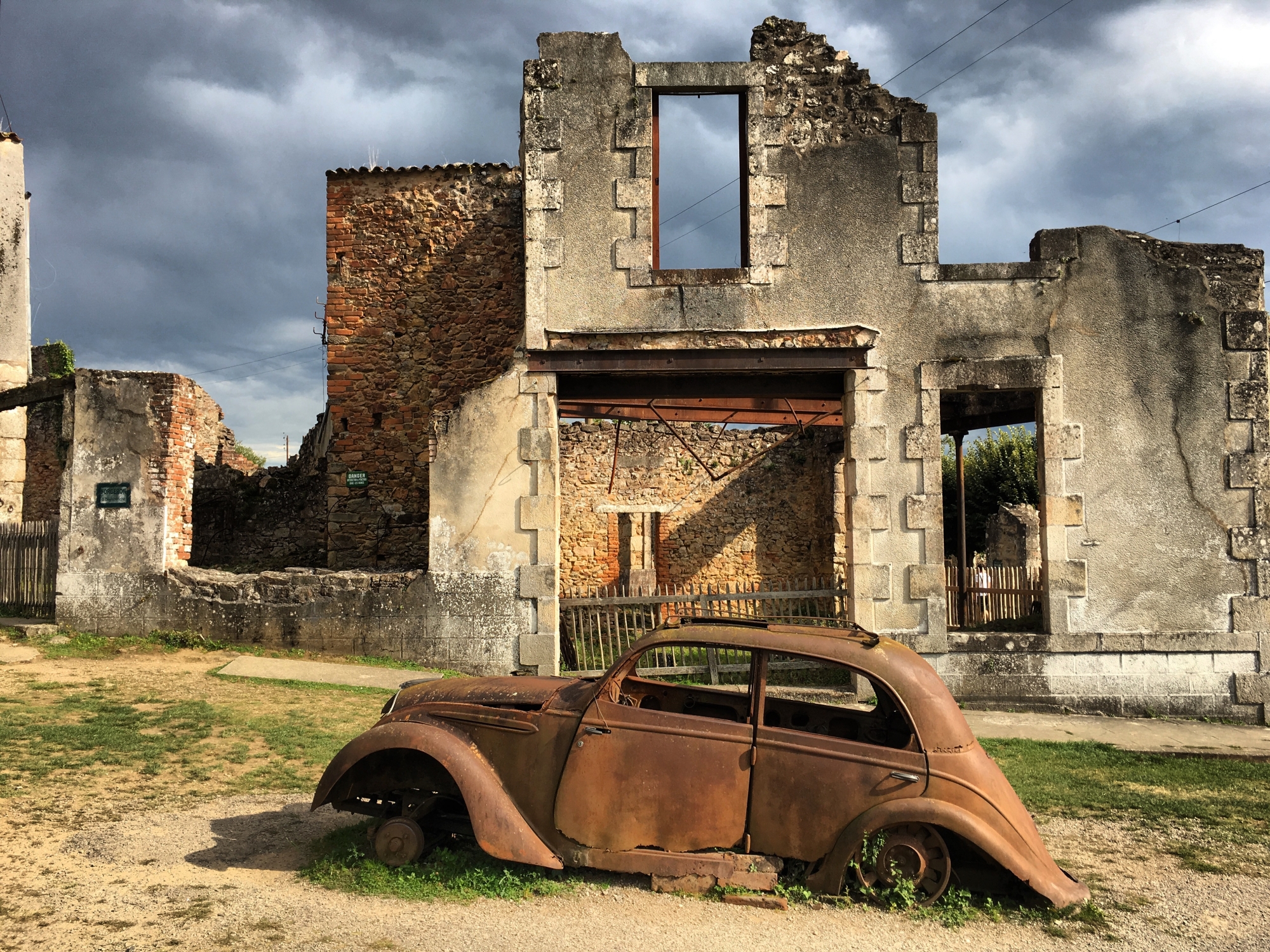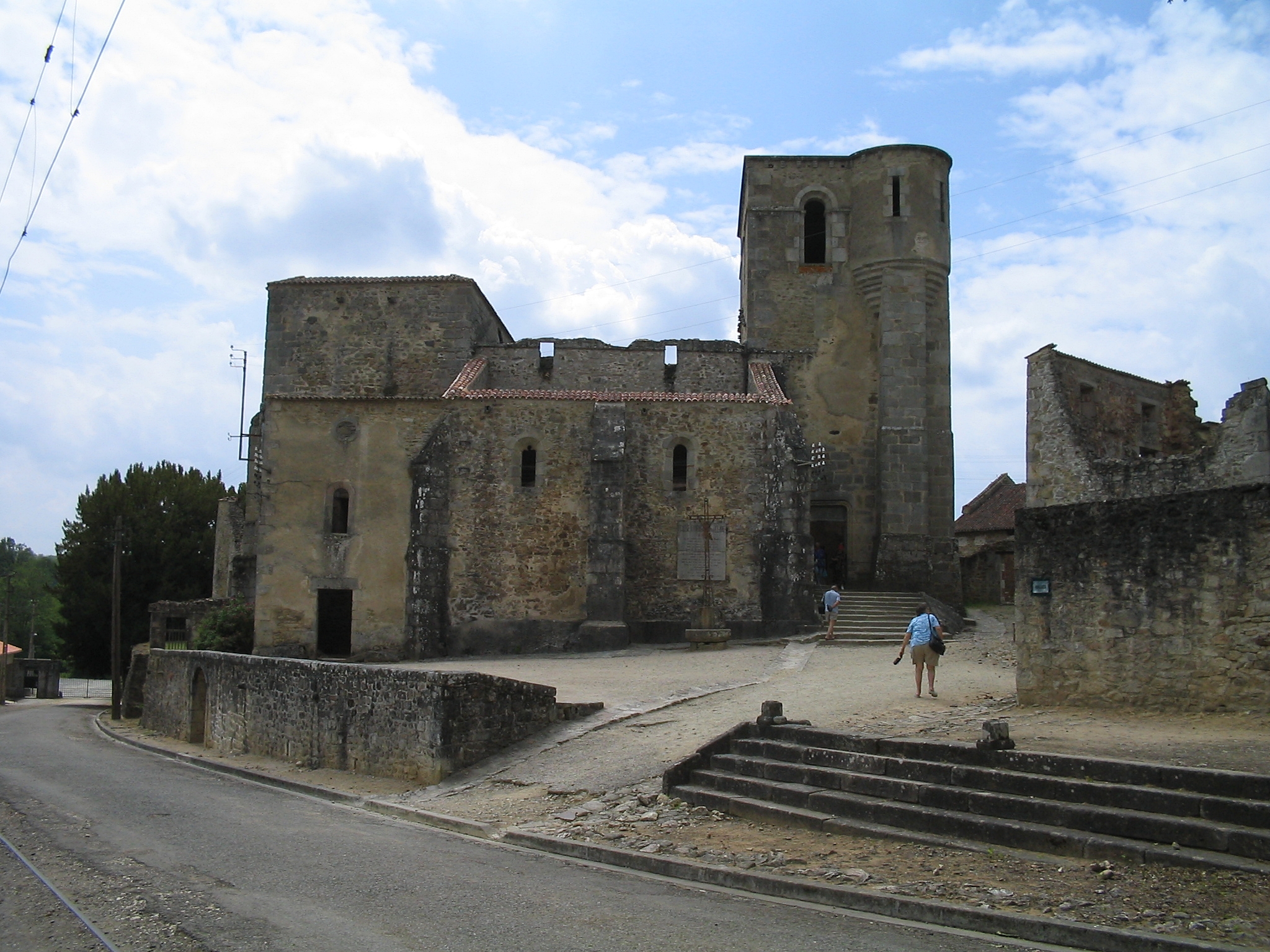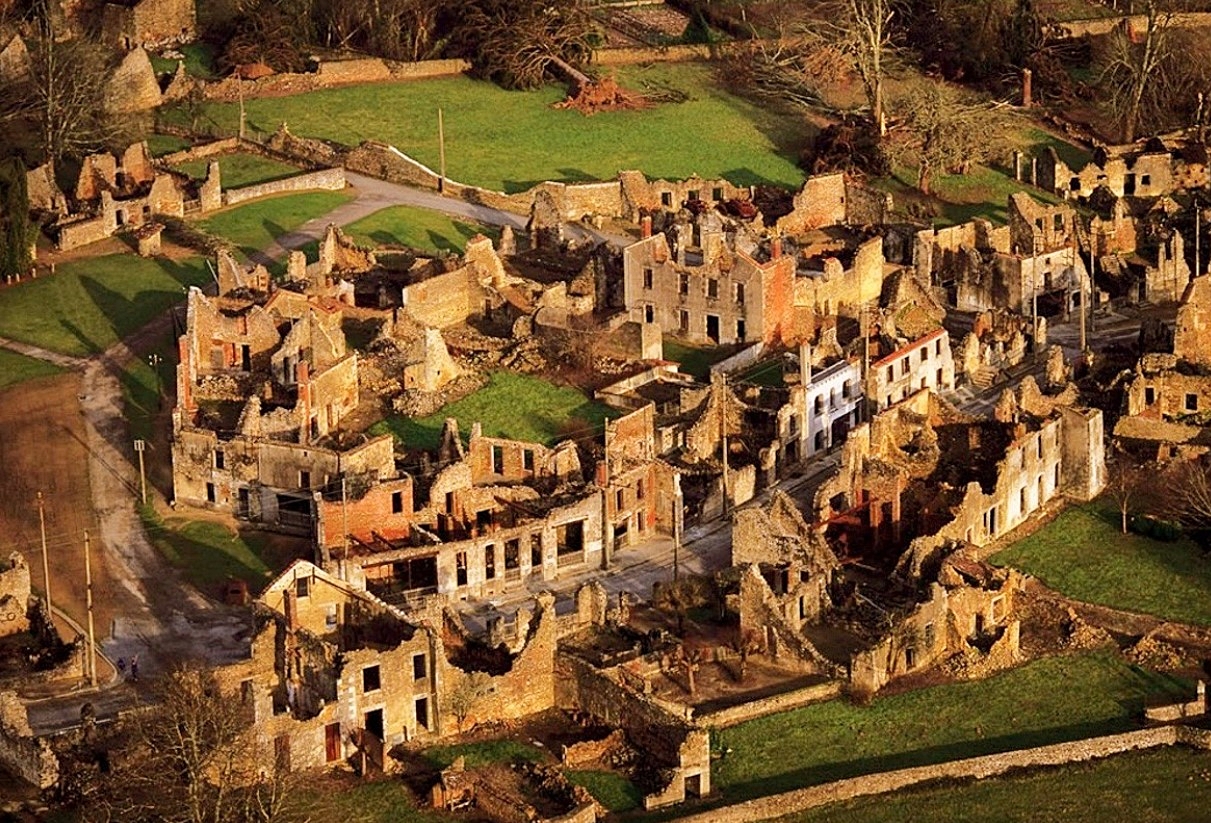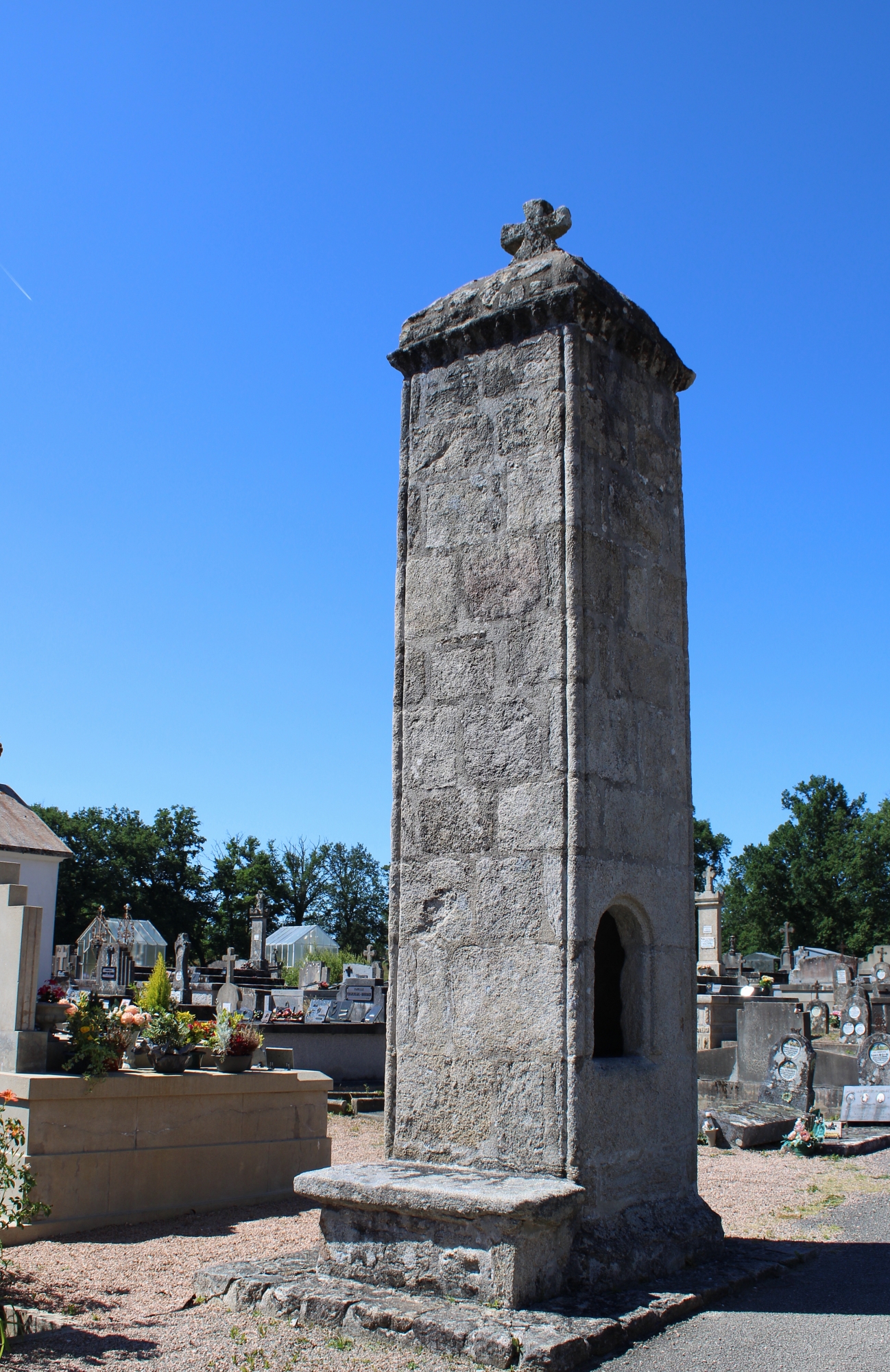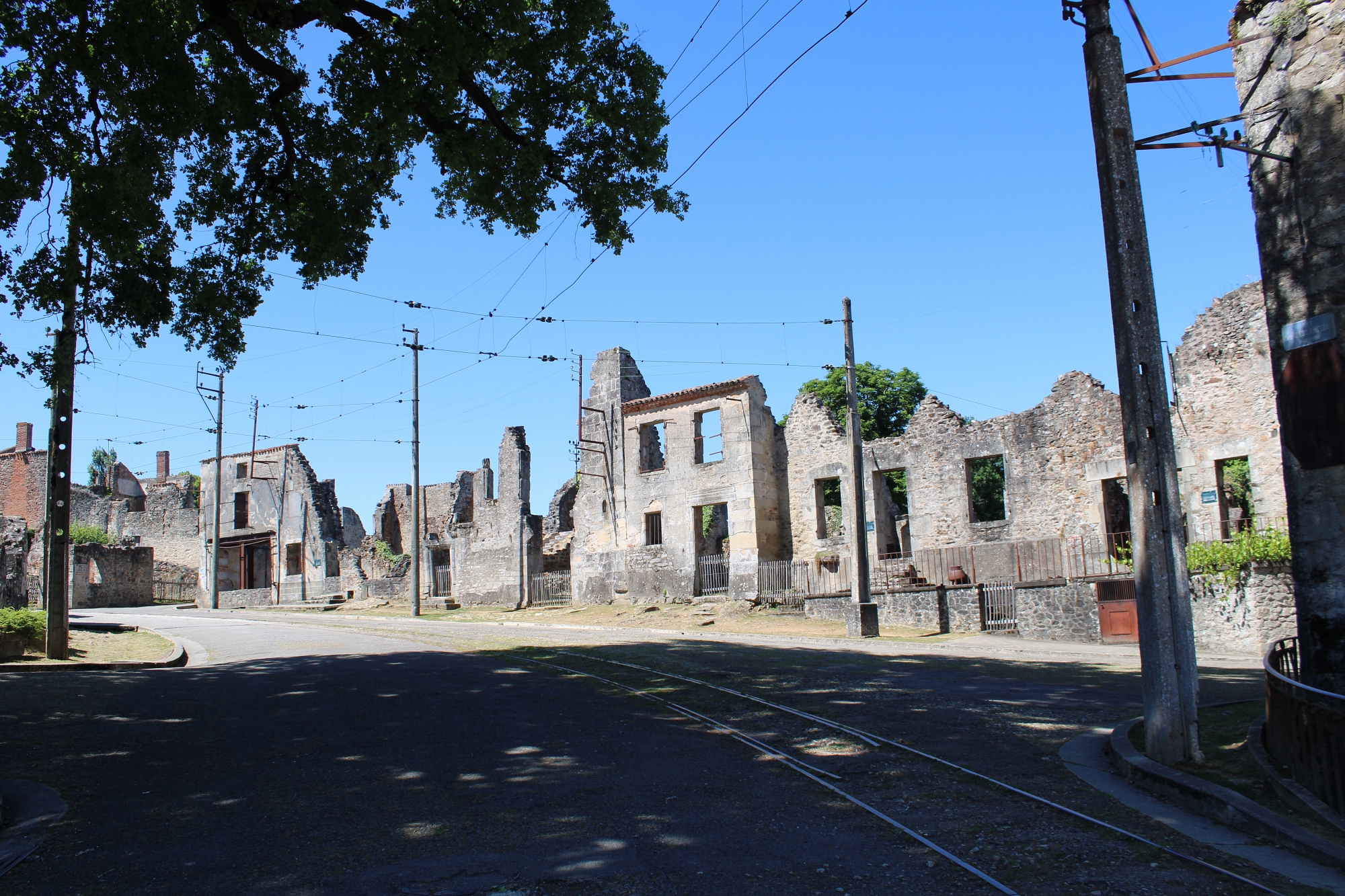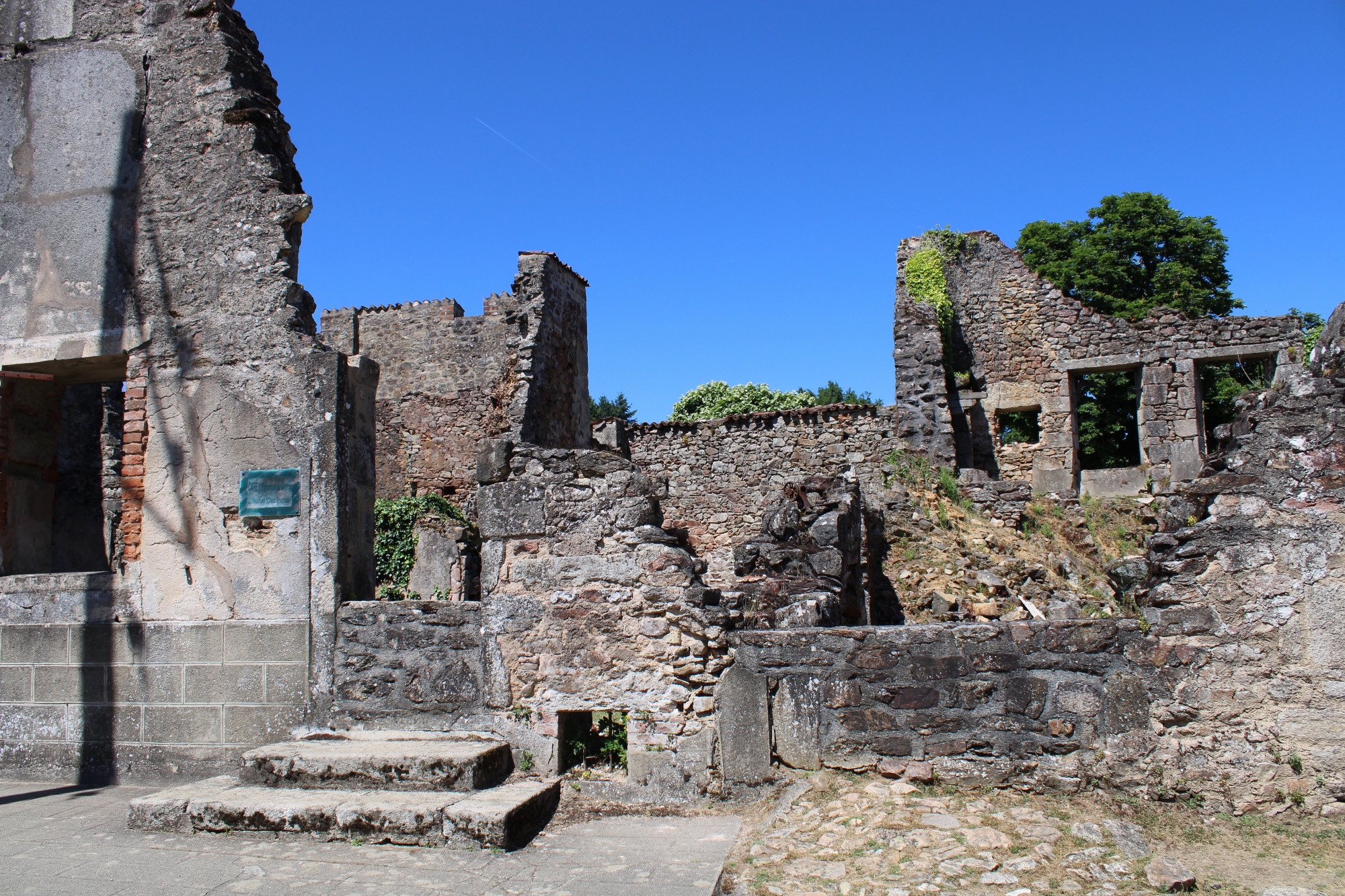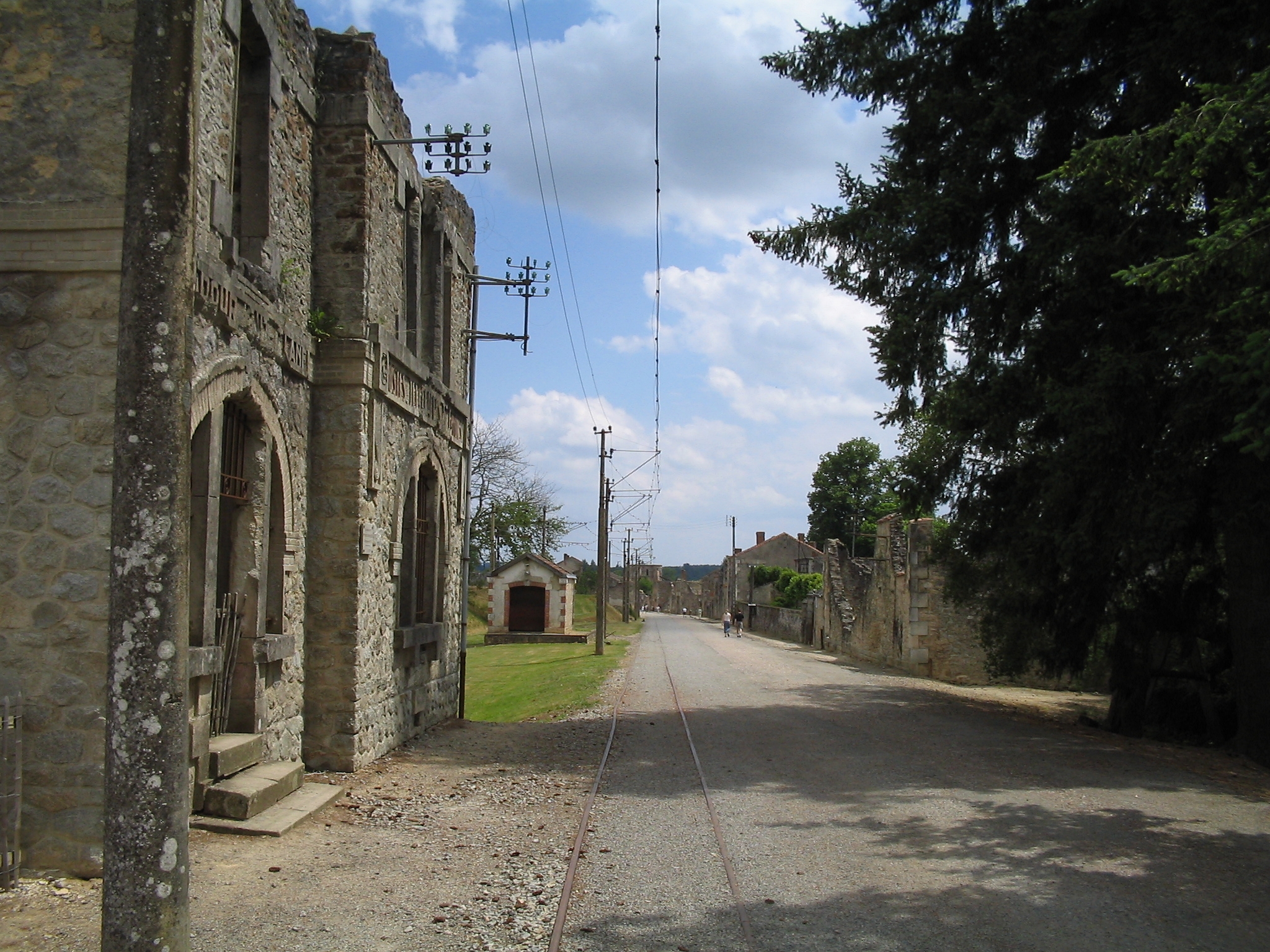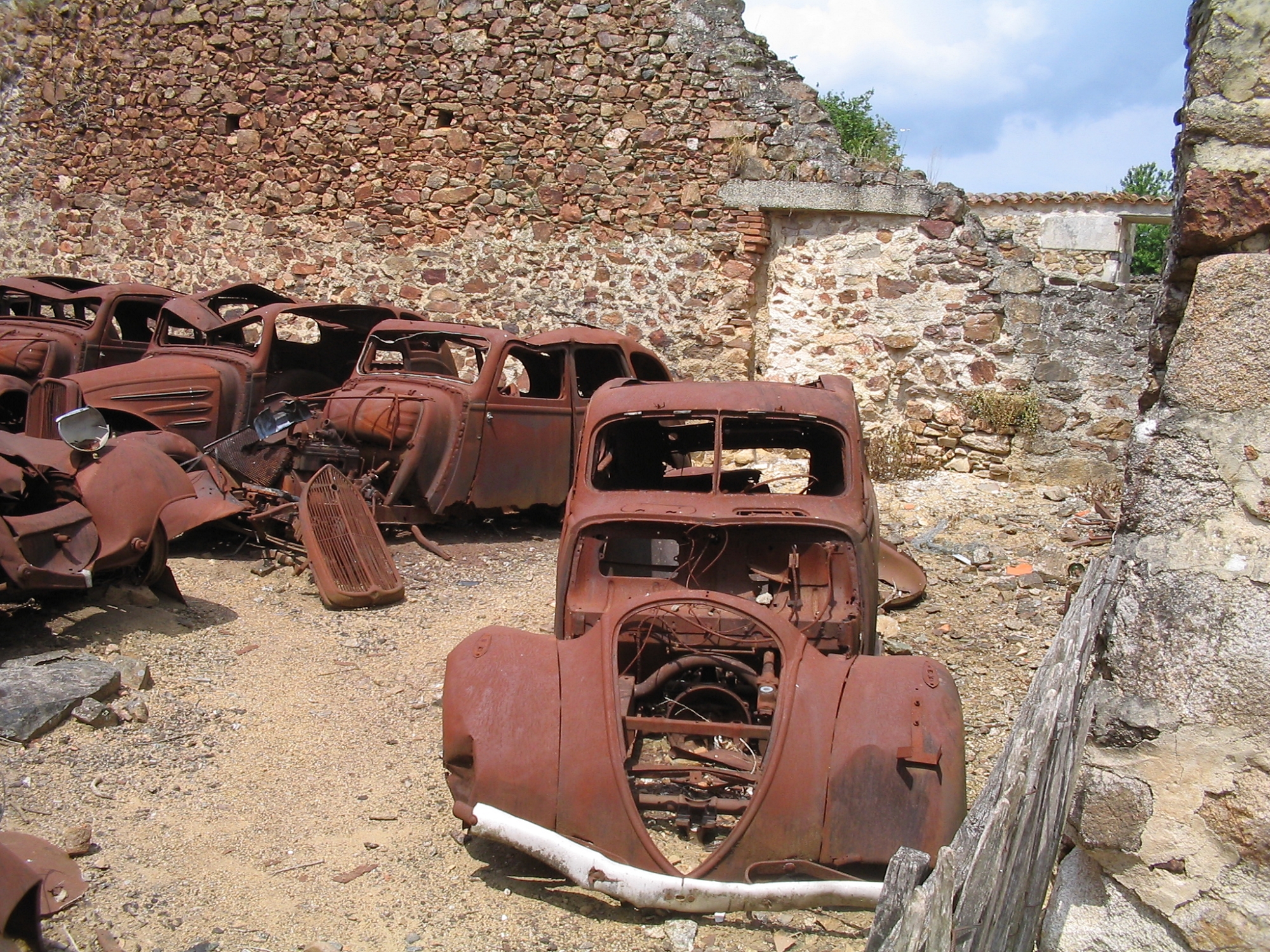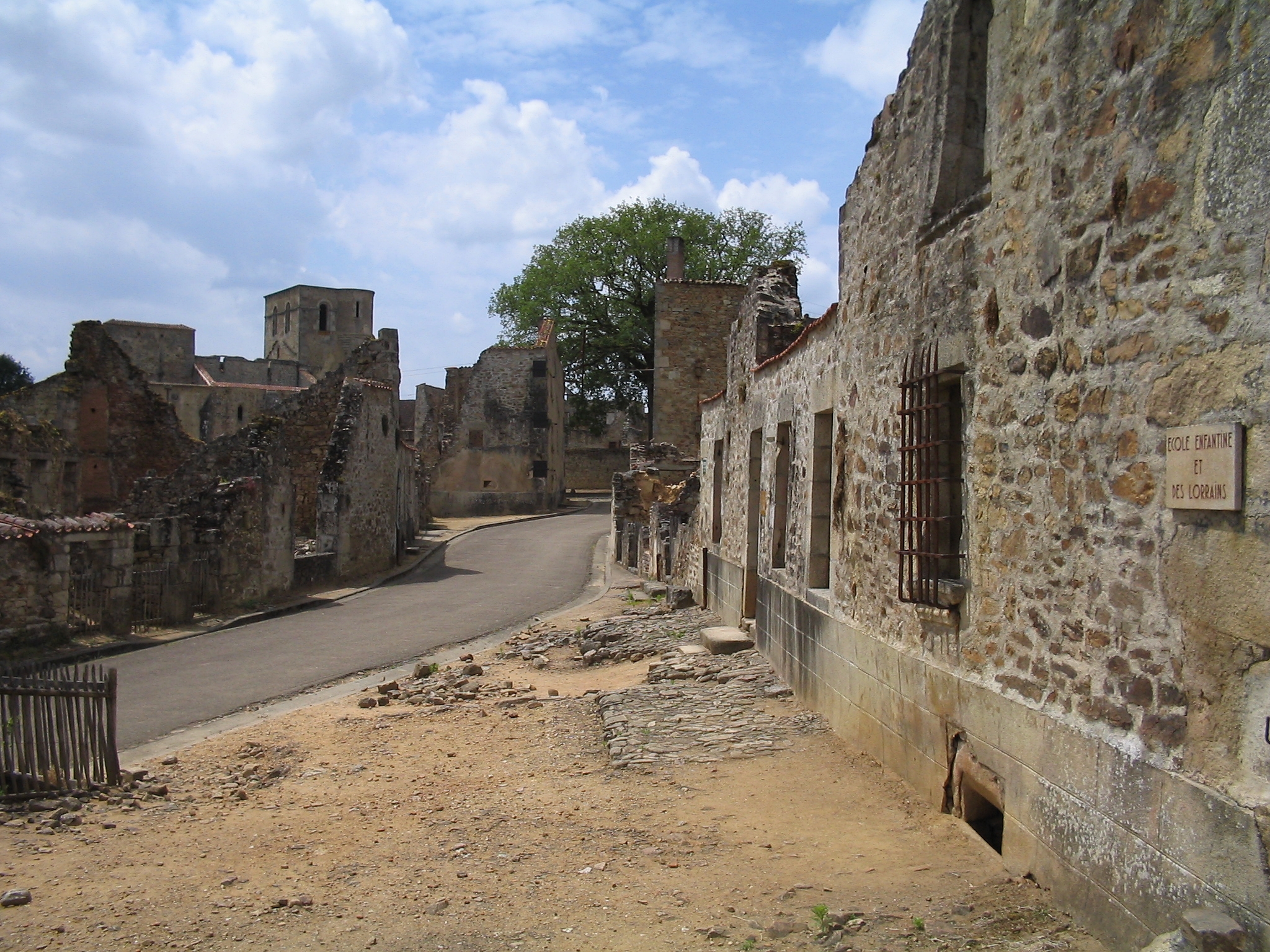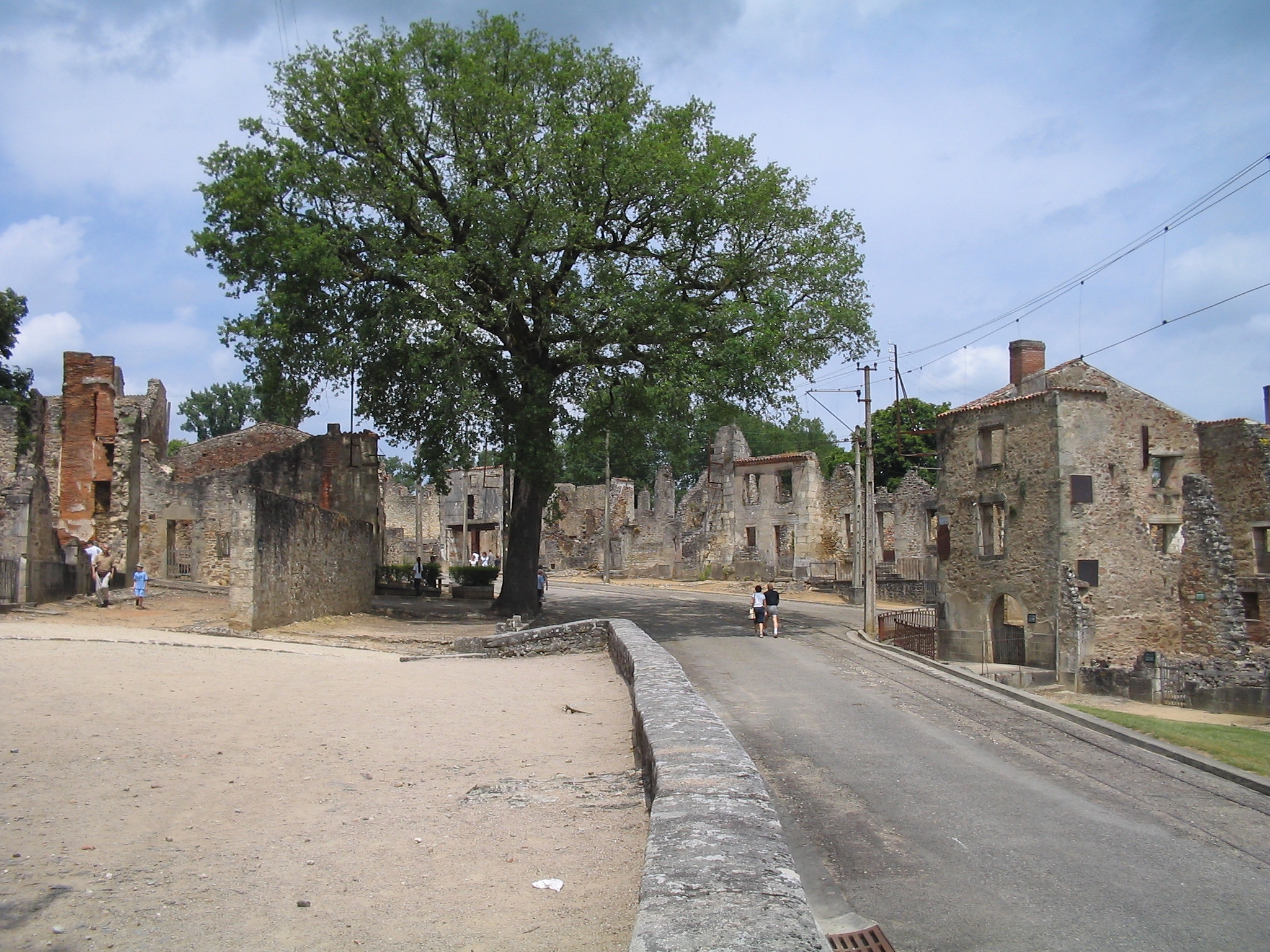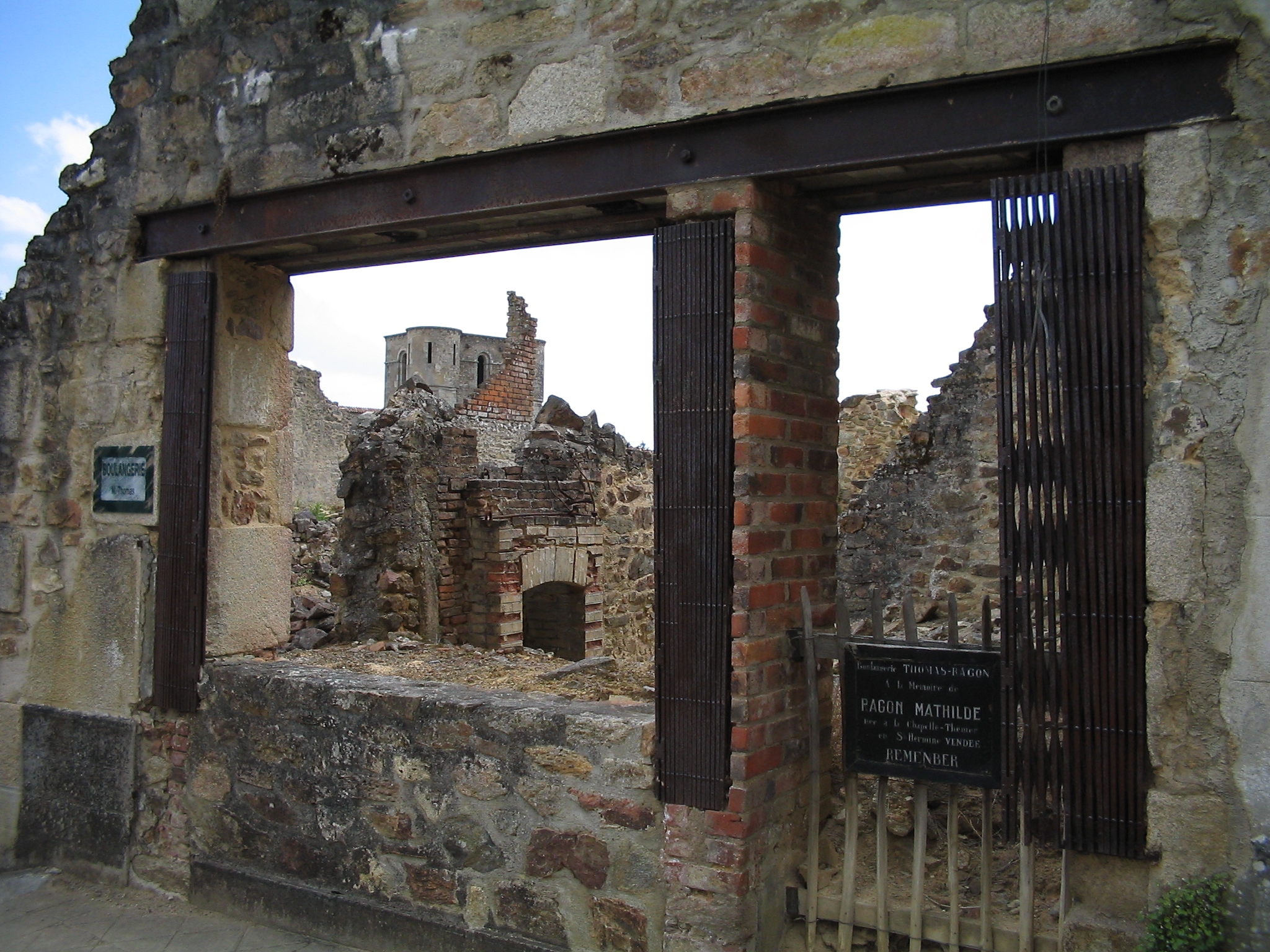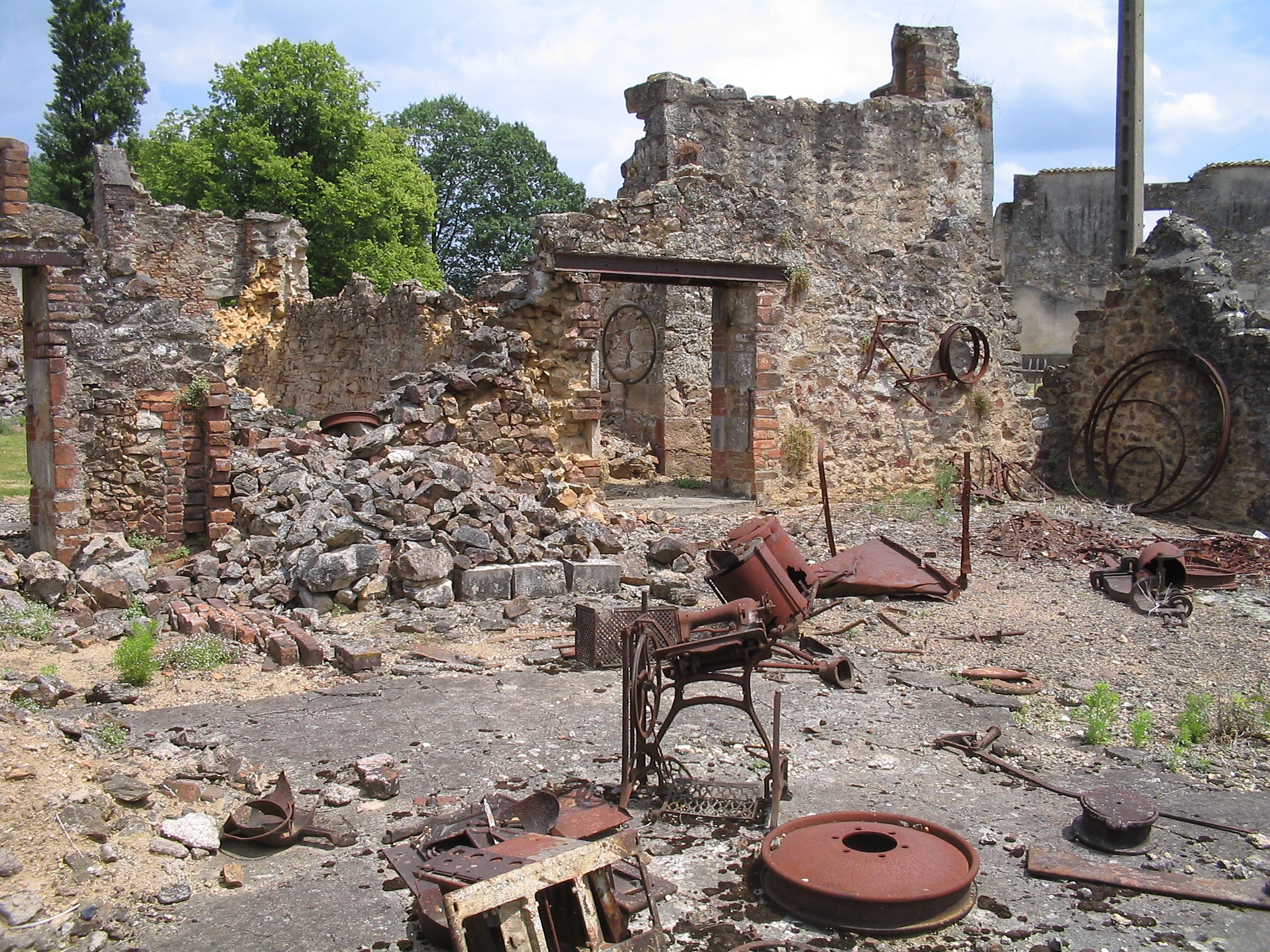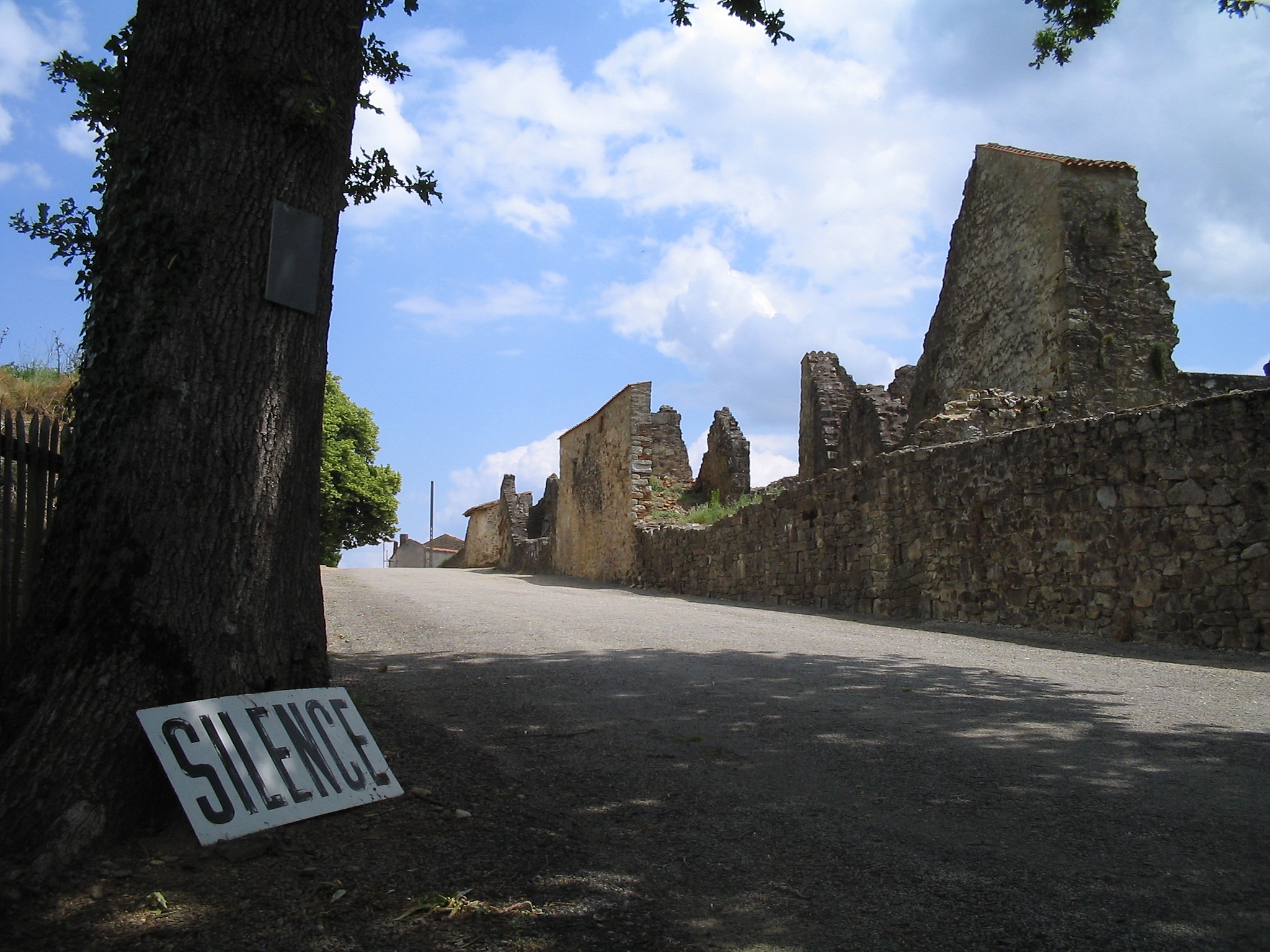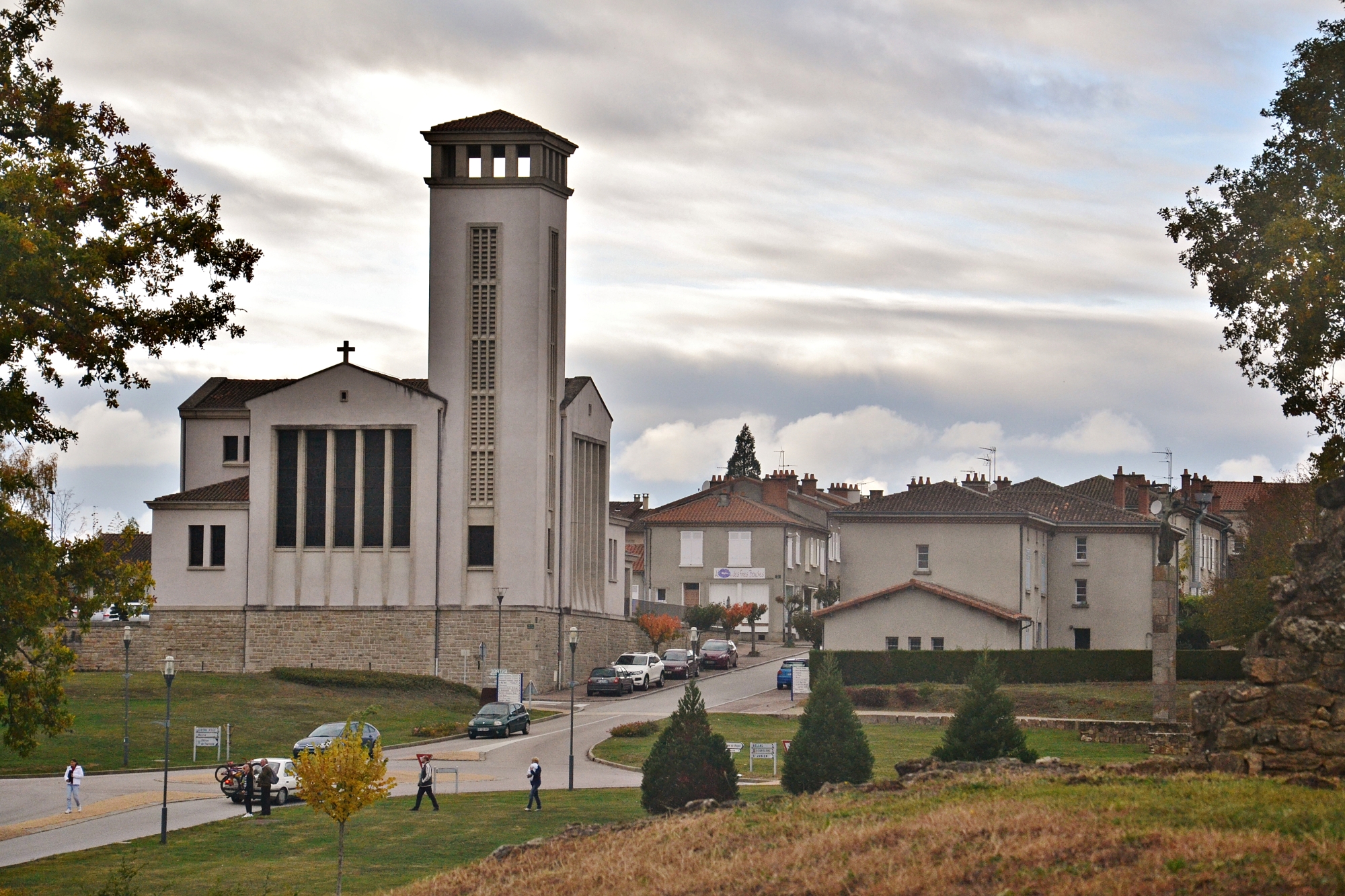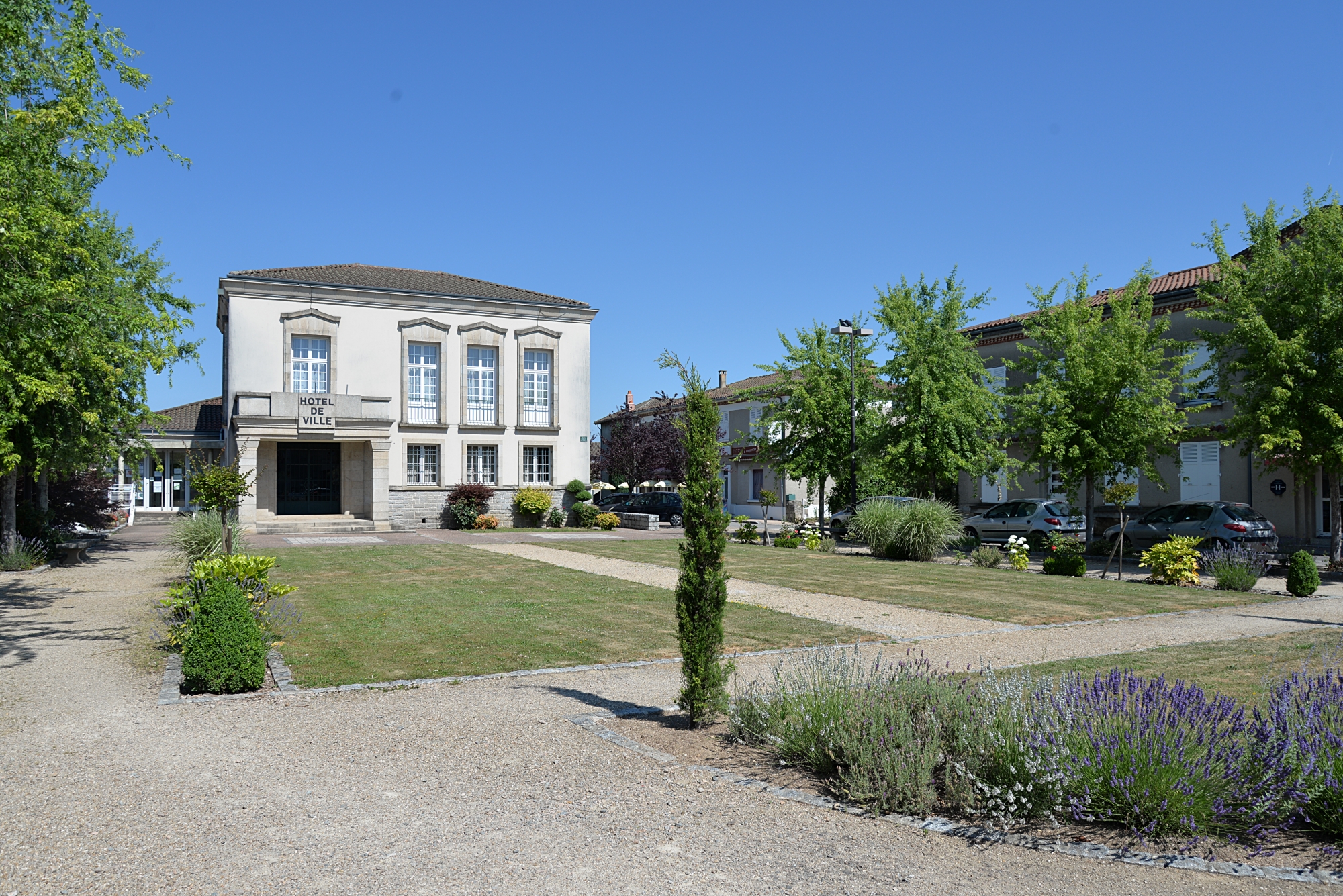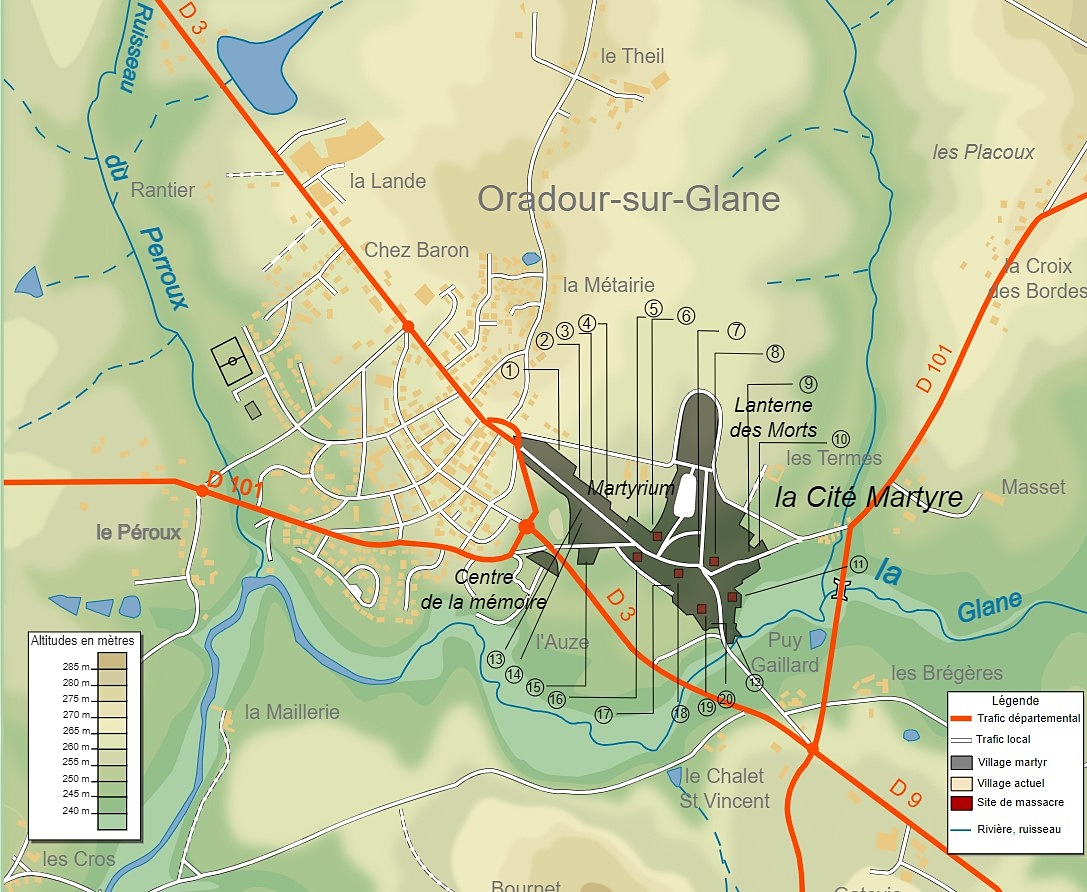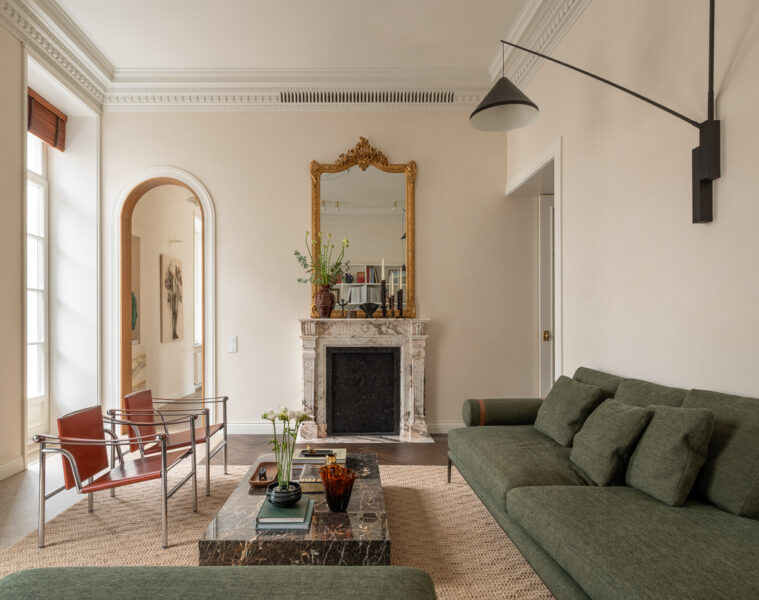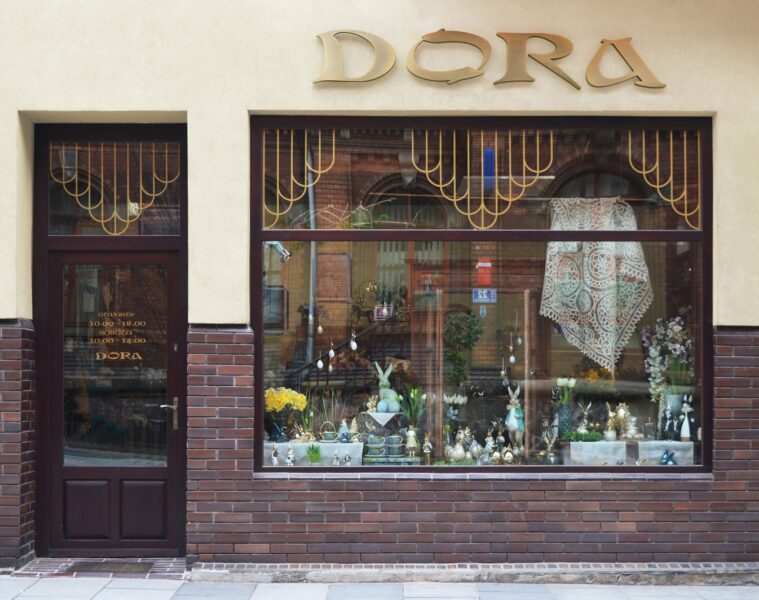On the Saturday afternoon of 10 June 1944, the peaceful life of a French town turned into hell on earth in an instant. Oradour-sur-Glane was surrounded by a German Waffen-SS unit that had come there with one aim – to exact bloody revenge on innocent civilians. The massacre of the local population has gone down in history as one of the most heinous crimes of the Second World War. It was decided not to rebuild the ruined settlement, keeping it in this state as a reminder of that tragic event. Today, Oradour-sur-Glane looks as it did in June 1944.
After the Allies landed in occupied France, the resistance movement intensified its activities. Units of the 2nd SS Panzer Division “Das Reich” were sent to fight partisans in the region. Its soldiers were notorious for committing bloody crimes. After the murder of an SS man, the Germans decide to take revenge on the civilians of the small town of Oradour-sur-Glane. Some historians speculate that the town became the Germans’ target by mistake, due to its name being similar to Oradour-sur-Vayres, where SS man Helmut Kämpfe was actually killed. The enraged criminals surrounded the settlement and pronounced a death sentence on it. The group numbered around 200 people. It was commanded by sturmbannführer Adolf Diekmann.
The town today. Photo: VVVCFFrance, CC BY-SA 4.0, via Wikimedia Commons
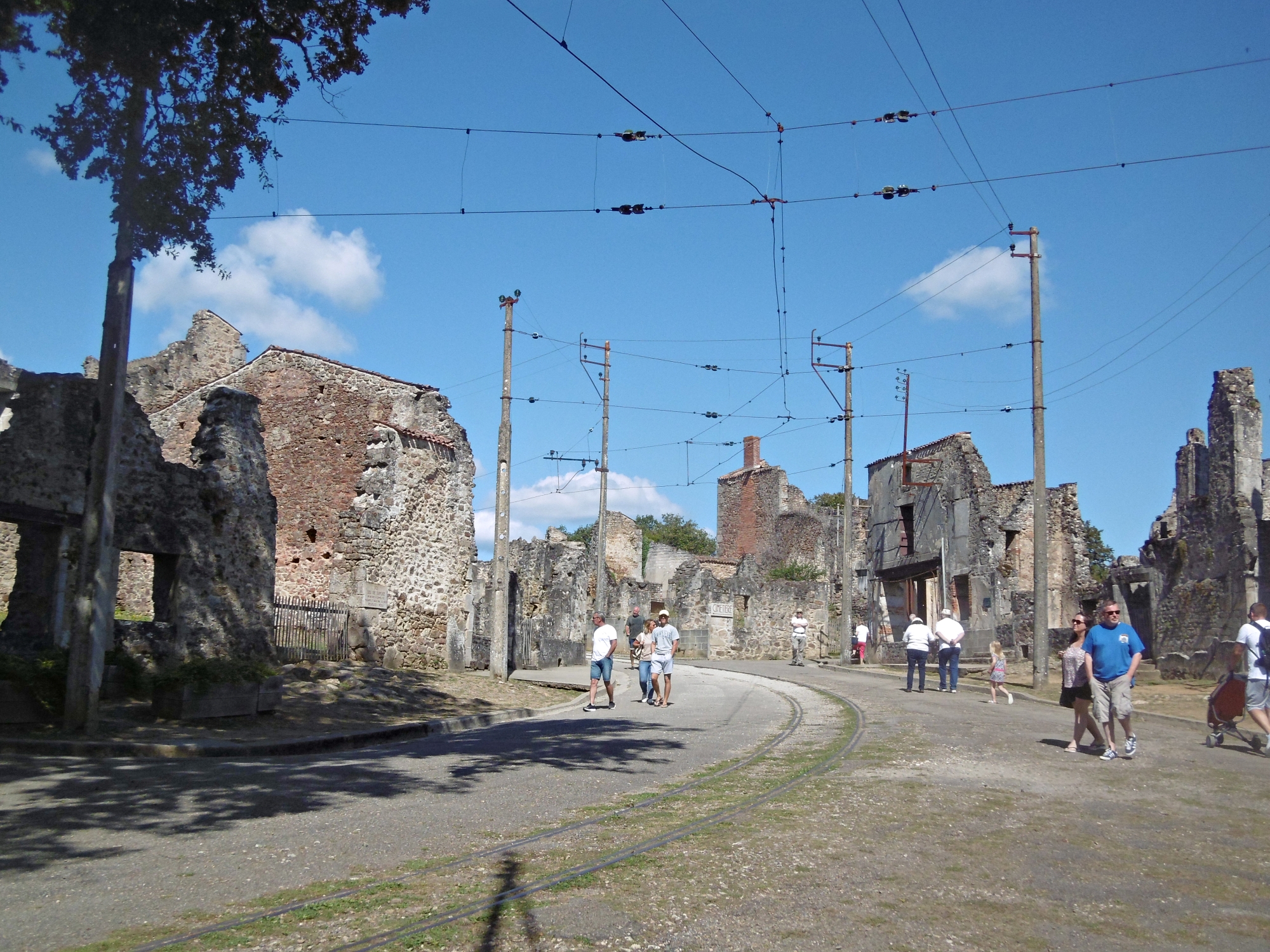
The town is located in western France, about 20 km from Limoges. Its inhabitants led a simple, ordinary life. They were mainly involved in trade and agriculture. There were not only houses, but also shops, craftsmen and four schools. The railway line, which opened in 1911, brought development to the settlement. The 1936 census showed 1574 inhabitants.
[Caption id=”attachment_223783″ align=”aligncenter” width=”1350″] One of the streets of Oradour-sur-Glane. Photo en.geneanet.org[/caption]
One of the streets of Oradour-sur-Glane. Photo en.geneanet.org[/caption]
After surrounding the town, the first SS vehicles entered the centre. The soldiers began to catch the surprised inhabitants out. They crowded them in whole groups in the market square. Those who for some reason could not go there, were sick or resisted, were shot on the spot. The Germans then separated the men from the women and children. These were herded to the local church and murdered there with rifles and grenades. The men were herded into barns and the buildings set on fire. They then opened fire on them with machine guns. They killed the survivors with pistol shots. After ransacking the buildings, the houses, church, schools, town hall, post office and hotel were also set on fire. In the morning the occupiers prepared a mass grave and removed the corpses. The number of victims was more than 640 innocent people. Witnesses who miraculously managed to survive the massacre later recalled scorched, still smouldering ruins full of charred corpses.

Thanks to the fact that most of the houses were built of stone and bricks, their walls survived the raging fires. on 28 November 1944, the French government decided to preserve the ruins of the village as a symbol of German crimes during the Second World War. Visitors to the site are forever struck by the sight of dozens of ruins, the burnt-out skeletons of houses, the wreckage of abandoned cars or everyday utensils.
In the post-war period, the village was rebuilt to the north-west of its original location. Bilingual plaques were placed at the entrances to the ruins and at the entrances to the village with the inscription Souviens-toi – Remember (French and English). In 1999, a museum, the Centre de la mémoire d’Oradour, was opened near the ruins. Most of the perpetrators of this crime have never been tried.
Source: thehistorypress.co.uk, wiadomosci.onet.pl
Read also: Architecture | Museum | Monument | History | Interesting Facts | France | Travel


